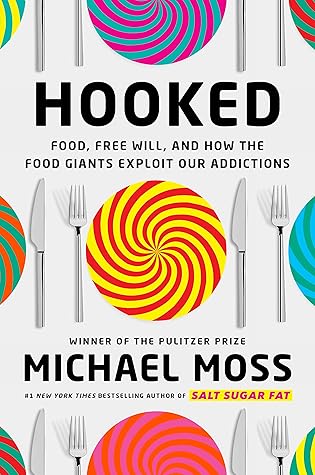More on this book
Community
Kindle Notes & Highlights
by
Michael Moss
Read between
June 25 - July 6, 2021
behavioral scientists who record the eye movements of shoppers as they move through the store. They know, for instance, that we pause at some displays for 5.8 seconds, others for just 3.3 seconds. That we take as few as 21 seconds to buy a particular item, on average. That we’ll spend $1.88 per minute on a short shopping trip, but only $1.23 per minute if the shopping lasts 25 minutes or more.
A thirty-second commercial can be cut down to six seconds and still implant really strong memories if it’s positioned right in relation to the other ads, one of the foundation’s investigations found. Another found that those six-second ads can use visual tricks to arouse us even when we have the sound turned off on our phones.
As we put on weight, we won’t like that pint of ice cream or bag of French fries any more than we did before. But we’ll be more apt to grab to eat it, since we’ll want it more, having remembered our past indulgences.
Researchers have just now discovered that the stomach has taste receptors that recognize sweetness, like those in the taste buds on our tongue; we don’t yet know why or how they might function.
Fat raises an objection to anything that remotely smacks of famine. “Whether you are starving, or just not eating, such as overnight, the fat tells the brain to lower the energy expenditure,” she said. But if you are dieting, then fat is your worst enemy.
Research has shown that when we get distracted while eating—as in watching TV or using our phones—we’ll eat more than we will eat when we’re focused on our food. It seems from this research that when we turn our attention away from the food to something as gripping as an electronic device, the brain, during that distraction, forgets that we were eating. When we come back to the food, we look at it as if it has changed.


